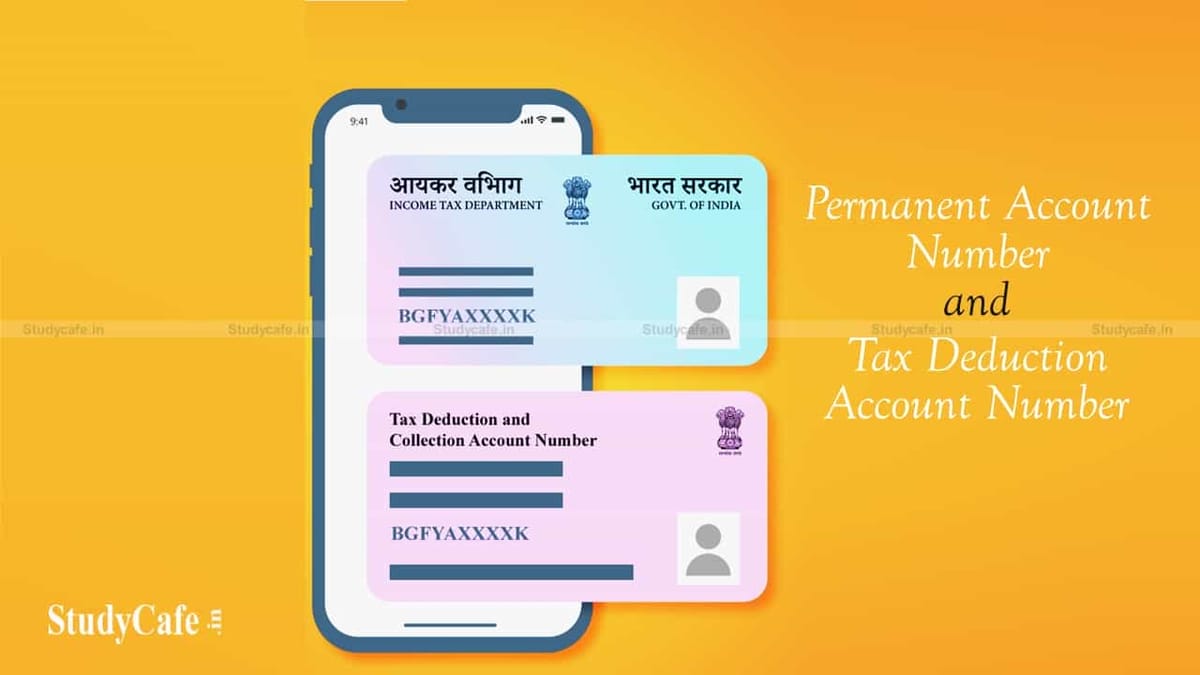TaxBlock | Oct 23, 2021 |

Difference between PAN and Tan : A Brief
WHAT IS PAN AND TAN?
PAN stands for Permanent Account Number and TAN stands for Tax Deduction Account Number. TAN is to be obtained by the person responsible to deduct tax, i.e., the deductor. In all the documents relating to TDS and all the correspondence with the Income-tax Department relating to TDS one has to quote his TAN.
PAN cannot be used for TAN, hence, the deductor has to obtain TAN, even if he holds PAN.
PERMANENT ACCOUNT NUMBER (PAN):
PAN is assigned to all the taxpayers in India as an identification number. PAN number is a single number which is an electronic system and has all the tax related information for a company or for a person. This act is as a primary key for storing information and it can be shared all over the country. There cannot be any entities who have same PAN.
ELIGIBILTY:
PAN card can be issued to an individual, NRI (Non-Resident Indians), companies or anyone who is paying tax in India.
STRUCTURE OF PAN CARD:
PAN card accommodate information like an identity, complies related with Know Your Customer guidelines, and Age proof.
Details of PAN card are as follows:
Cardholder’s Name: Applicable to Individual and company.
Cardholder’s Father’s Name: Applicable to cardholder who is an individual.
Date of Birth: Date of Birth shall be mention if the cardholder is an individual and date of registration shall be mention if the cardholder is a company.
PAN Number: PAN Number is a 10 letter alpha numerical number and the each number represents clear information of the cardholder. Which are explained as follows:
Example – AAAPG1234P
Individual’s Signature: The PAN card also have signature of the individual which is needed in some financial transaction.
Individual’s Photograph: Photograph on the PAN acts as an identity proof for an individual, in case of companies and firm there is no photograph on the card.
TAX DEDUCTION ACCOUNT NUMBER (TAN):
In India, under Central Government, the Income Tax Department issues 10 digit Alphanumeric Number to every person who has responsibility of TCS (Collecting Tax at Source) or TDS (Deducting Tax at Source). The number which is given is really unique and it is called as TAN. As per Section 203A of the Income Tax Act, 1961, the TAN number shall have to be written on every TDS returns filed.
ELIGIBILITY:
TAN Number can be issued to an individual, company, enterprise, or a firm and in case of company or organization they will be treated as an individual.
STRUCTURE OF TAN:
The identifier will find many details which is encoded by using the combination of letters and numbers. The details of this are given below:
Example: PDES01011F
DIFFERENCE BETWEEN PAN AND TAN:
| PARAMETERS | PAN | TAN |
| 1. ISSUED BY: | The Income Tax Department | The Income Tax Department |
| 2. REQUIRED BY: | Every Taxpayers | All the individuals and firms who pays tax at source. |
| 3. GOVERNING LAWS: | Section 139 of Income Tax Act, 1961. | Section 203A of the Income Tax Act, 1961. |
| 4. IDENTIFYING CODE: | 10 Digit Alphanumerical Code. | 10 Digit Alphanumerical Code. |
| 5. PRIMARY PURPOSE: | It acts as all-in-one code and it gives permission for all financial transactions. | It makes TDS procedure easier. |
| 6. NECESSARY FORMS: | For citizen of India – Form 49A. For foreigners – Form 49AA. | Form 49B. |
| 7. MAXIMUM NUMBER THAT CAN BE HOLDHELD: | One. | One. |
In case of any Doubt regarding Membership you can mail us at contact@studycafe.in
Join Studycafe's WhatsApp Group or Telegram Channel for Latest Updates on Government Job, Sarkari Naukri, Private Jobs, Income Tax, GST, Companies Act, Judgements and CA, CS, ICWA, and MUCH MORE!"